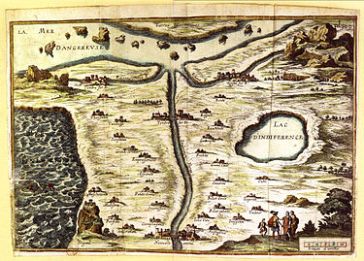During its lifespan of 15 years as an avant-garde cultural movement, the Situationist International (1957-1972) shed light upon many of the conditions and limitations of urban society – laying considerable focus on the way maps held a stern, designated structure over one’s perpetual spatial awareness in cities such as Paris and New York. Self-proclaimed front-runner of the Situationist International, Guy Debord was interested in a far more elastic and inspiring exploration of one’s aesthetic environment. Searching beyond the obvious limits of publicised maps, Debord was the drive behind the ‘derive’. This psychogeographical term was developed in order to define the journey of introspection within our environment and to challenge the ‘question of the construction and perception of urban space’ (McDonough)[1]. The French ‘derive’ translates literally to the English ‘drift’, and refers to an ‘unplanned journey through a landscape’ (Wikipedia, 2014). [2]
Removing the structures of cartography, Debord manipulates the derive in his “psychogeographic” map entitled ‘The Naked City’ (1957). Deliberately fragmented, Debord’s composition of 19 sections of a map of Paris demonstrates a “subjective and temporal experience of the city as opposed to the seemingly omnipotent perspective of the planimetric map” (Sant, 2004). [3]
For centuries, mapping has been used as tactic to allow navigation of space and place, providing dependable directions to get to your destination. Yet challenging the theory of objectivity, ‘The Naked City’, as an example of Situationist maps, provides “a useful example of visualizing a subjective view of the city.” (Sant, 2004)
While Guy Debord is believed to be somewhat of a revolutionary, art history Professor Tom McDonough, in his thesis ‘Guy Debord and the Situationist International: Texts and Documents’, retaliates that the idea of ‘derive’ was considered 300 years earlier, in 1653 with Carte du Tendre by French novelist Madeline du Scudery. This fictional map presents a ‘lover’s land’, using the allegory of the spatial journey ‘to trace possible histories of a love affair’ (McDonough). So it seems, the craft of derive is an age old truth, quietly chasing the efforts of cartography.
A technique to relinquish the confines of structural capitalism, derive allows any person to become an explorer of their own right. In these contemporary times, Debord’s ideology still exists. Pedestrian-based live art event ‘En Route’ promotes and organises the exploration of the contours of cities, urging a realisiation of our surroundings, in which “the private and the public, imaginal and concrete, intersect and overlap.”[4]
Sources:
1.McDonough, T 2004, Guy Debord and the Situationist International: Texts and Documents, MIT Press, Cambridge.
2.Wikipedia 2014, Wikipedia, the free Encyclopedia, viewed 14 April 2014, <http://en.wikipedia.org/wiki/D%C3%A9rive>.
3.Alison Sant 2004, Redefining the Basemap, viewed 14 April 2014, <http://www.intelligentagent.com/archive/Vol6_No2_interactive_city_sant.htm>.
4. http://www.onestepatatimelikethis.com/enroute.html


